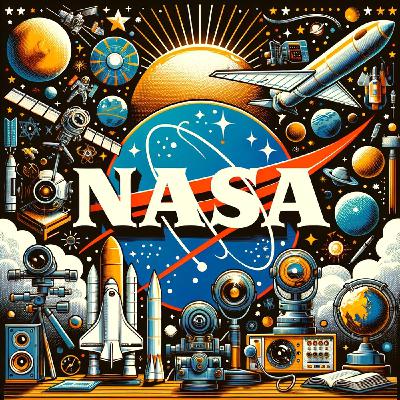NASA's Cygnus Upgrade Boosts ISS Resupply, Agency Reorganization Looms
Update: 2025-09-15
Description
NASA headlines this week with the successful launch of Northrop Grumman’s new Cygnus XL spacecraft aboard a SpaceX Falcon 9, marking a leap in ISS resupply capability. According to Spaceflight Now, this upgraded Cygnus carries 33 percent more cargo, a vital boost for station operations and research, and was sent early to fill a gap after damage to the previous vehicle forced a fast-paced schedule shuffle. NASA and Northrop Grumman have now confirmed future Cygnus launches, which signals ongoing innovation and reliability in U.S. commercial space partnerships.
On the leadership and policy front, NASA’s Acting Administrator Janet Petro revealed that a sweeping agency reorganization is imminent, with details expected in a matter of weeks. Over 2,100 employees have already accepted a deferred resignation offer, influenced by fiscal uncertainty and new federal workforce mandates. As reported in Politico and Ars Technica, principal investigators have also begun outlining contingency plans in case active missions are forced to close next fiscal year. Congress’s ongoing budget reconciliation package, “The One Big Beautiful Bill Act,” proposes $10 billion for human exploration, signaling continued national investment in crewed missions, and an $85 million allocation to relocate the space shuttle Discovery, further stirring excitement among state and local officials.
Leadership shuffles remain a hot topic, with the president recently withdrawing Jared Isaacman’s nomination as NASA Administrator and no successor named yet. That leaves NASA’s future direction awaiting new vision and stability.
As for American citizens, these launches and organizational changes promise more robust support for STEM industries and fresh opportunities for U.S. jobs, research, and inspiration. Businesses are eyeing lucrative partnerships, especially as NASA pivots further to commercial providers for key launches. Local governments benefit from budget allocations for space infrastructure, and the ongoing federal-state shuffle on shuttle Discovery impacts community pride and tourism. Internationally, NASA’s pivot away from Russian engine suppliers under congressional mandate and the rise of Firefly’s Antares 330 signals a clear move towards American-made engines, tightening global supply chains and shaping diplomatic ties.
For listeners wondering where it leads, the next Cygnus mission is already set for 2026, and NASA’s Senate appropriations markup this week could finalize budget priorities. To engage, citizens can reach out to elected representatives about NASA’s budget and science program funding, attend upcoming NASA virtual town halls, or follow agency updates at nasa.gov.
Thanks for tuning in! Don’t forget to subscribe and catch every episode. This has been a quiet please production, for more check out quiet please dot ai.
For more http://www.quietplease.ai
Get the best deals https://amzn.to/3ODvOta
This content was created in partnership and with the help of Artificial Intelligence AI
On the leadership and policy front, NASA’s Acting Administrator Janet Petro revealed that a sweeping agency reorganization is imminent, with details expected in a matter of weeks. Over 2,100 employees have already accepted a deferred resignation offer, influenced by fiscal uncertainty and new federal workforce mandates. As reported in Politico and Ars Technica, principal investigators have also begun outlining contingency plans in case active missions are forced to close next fiscal year. Congress’s ongoing budget reconciliation package, “The One Big Beautiful Bill Act,” proposes $10 billion for human exploration, signaling continued national investment in crewed missions, and an $85 million allocation to relocate the space shuttle Discovery, further stirring excitement among state and local officials.
Leadership shuffles remain a hot topic, with the president recently withdrawing Jared Isaacman’s nomination as NASA Administrator and no successor named yet. That leaves NASA’s future direction awaiting new vision and stability.
As for American citizens, these launches and organizational changes promise more robust support for STEM industries and fresh opportunities for U.S. jobs, research, and inspiration. Businesses are eyeing lucrative partnerships, especially as NASA pivots further to commercial providers for key launches. Local governments benefit from budget allocations for space infrastructure, and the ongoing federal-state shuffle on shuttle Discovery impacts community pride and tourism. Internationally, NASA’s pivot away from Russian engine suppliers under congressional mandate and the rise of Firefly’s Antares 330 signals a clear move towards American-made engines, tightening global supply chains and shaping diplomatic ties.
For listeners wondering where it leads, the next Cygnus mission is already set for 2026, and NASA’s Senate appropriations markup this week could finalize budget priorities. To engage, citizens can reach out to elected representatives about NASA’s budget and science program funding, attend upcoming NASA virtual town halls, or follow agency updates at nasa.gov.
Thanks for tuning in! Don’t forget to subscribe and catch every episode. This has been a quiet please production, for more check out quiet please dot ai.
For more http://www.quietplease.ai
Get the best deals https://amzn.to/3ODvOta
This content was created in partnership and with the help of Artificial Intelligence AI
Comments
In Channel





